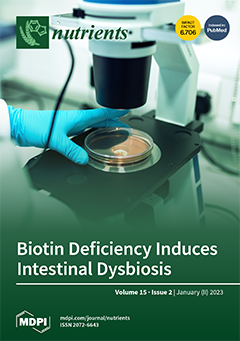Essential oils (EO) are promising feed additives for their antibacterial, antioxidant, and immune-enhancing abilities with low toxicity. Carvacrol, thymol, and cinnamaldehyde are commonly used to synthesize EO. However, few studies focus on combining these three EO in early-weaned piglets. In the present study,
[...] Read more.
Essential oils (EO) are promising feed additives for their antibacterial, antioxidant, and immune-enhancing abilities with low toxicity. Carvacrol, thymol, and cinnamaldehyde are commonly used to synthesize EO. However, few studies focus on combining these three EO in early-weaned piglets. In the present study, 24 piglets weaned at 21 d of age were randomly divided into 2 groups (6 replicate pens per group, 2 piglets per pen). The piglets were fed a basal diet (the control group) and a basal diet supplemented with 400 mg/kg EO (a blend consisting of carvacrol, thymol, and cinnamaldehyde, the EO group) for 28 days. At the end of the experiment, one piglet per pen was randomly chosen to be sacrificed. Growth performance, hematology, plasma biochemical indices, antioxidant capacity, intestinal epithelial development and immunity, colonic volatile fatty acids (VFA), and microbiota were determined. The results indicated that the diet supplemented with EO significantly improved average daily feed intake (ADFI,
p < 0.01) and average daily gain (ADG,
p < 0.05) in the day 0 to 28 period. EO supplementation led to a significant decrease in plasma lysozyme (
p < 0.05) and cortisol levels (
p < 0.01). Additionally, EO significantly promoted jejunal goblet cells in the villus, jejunal mucosa
ZO-1 mRNA expression, ileal villus height, and ileal villus height/crypt depth ratio in piglets (
p < 0.05). The ileal mucosal TLR4 and NFκB p-p65/p65 protein expression were significantly inhibited in the EO group (
p < 0.05). Colonic digesta microbiota analysis revealed that bacteria involving the Erysipelotrichaceae family,
Holdemanella genus,
Phascolarctobacterium genus, and
Vibrio genus were enriched in the EO group. In conclusion, these findings indicate that the EO blend improves ADG and ADFI in the day 0 to 28 period, as well as intestinal epithelial development and intestinal immunity in early-weaned piglets, which provides a theoretical basis for the combined use of EO in weaned piglets.
Full article






